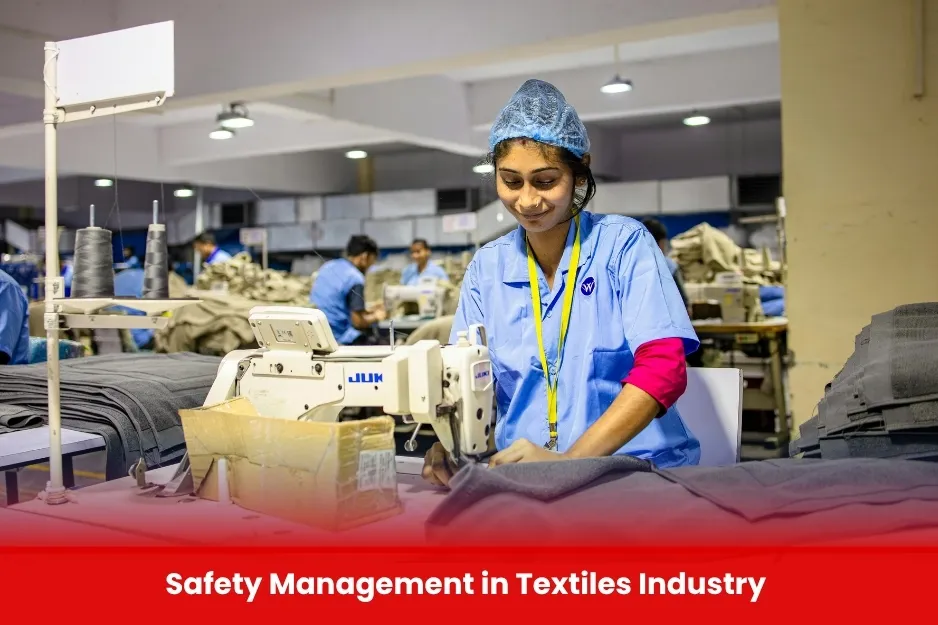Safety Management in Textiles Industry 1 Month
At Buraaq UK, we understand the complex and high-risk nature of the textiles and garment industry, where workers are frequently exposed to hazards such as fire, dust, chemicals, noise, poor ergonomics, and unsafe machinery. To address these risks and promote a culture of safety, we offer a specialised 1-Month Training Program focused on Safety Management in the Textiles Sector.

Aim of Safety Management in Textiles Industry 1 Month
To equip individuals working in the textile and garment manufacturing sector with essential knowledge and practical skills to identify workplace hazards, reduce risk, and implement effective safety management systems in alignment with UK and international safety standards.
Course Overview
Safety Management in Textiles Industry 1 Month
Total Modules 8
Training Credits 16
Directed Learning Hours (DLH) 80
Course Code BUK1742
- Educational Background
- Minimum requirement: Basic literacy and understanding of English
- Preferred:
- Secondary school education (GCSEs or equivalent)
- Technical diploma or vocational training in textile production, garment manufacturing, or industrial operations (not mandatory)
- Professional Experience
- Individuals currently employed in:
- Textile mills (spinning, weaving, dyeing, finishing)
- Garment factories
- Fabric printing or chemical processing units
- Entry-level staff and supervisors without prior safety training are welcome
- Roles Targeted for Training
- Line supervisors
- Factory floor managers
- Safety officers or coordinators
- Machine operators
- Maintenance and utility staff
- HR or compliance staff responsible for worker welfare
| Course Code | Curriculum Title | Credit | DLH |
|---|---|---|---|
| BUK1742-1 | Introduction to Industrial Safety in Textiles | 4 | 20 |
| BUK1742-2 | Hazard Identification and Risk Assessment | 4 | 20 |
| BUK1742-3 | Fire Safety, PPE & Emergency Response | 4 | 20 |
| BUK1742-4 | Safety Audits, Training, and Continuous Improvement | 4 | 20 |
1: Introduction to Industrial Safety in Textiles
- Importance of safety in the textile industry
- Key hazards in textile manufacturing (mechanical, electrical, chemical, fire, etc.)
- Overview of textile processes (spinning, weaving, dyeing, finishing, etc.)
- Role of safety culture and employee behavior
- Legal framework: OSHA, Factory Act, and local regulations
2: Hazard Identification, Risk Assessment & Control (HIRAC)
- Hazard types: physical, chemical, biological, ergonomic
- Steps in risk assessment (HIRAC method)
- Control measures: elimination, substitution, engineering controls, PPE
- Incident reporting and investigation
3: Fire Safety, PPE & Emergency Response
- Fire hazards in textile units (lint, chemicals, electrical)
- Fire prevention and protection systems (extinguishers, alarms, hydrants)
- Types of PPE and their correct usage (eye, ear, hand, respiratory, body protection)
- Emergency preparedness and evacuation planning
4: Safety Audits, Training, and Continuous Improvement
- Elements of a safety management system (OHSMS, ISO 45001)
- Conducting workplace safety audits and inspections
- Reporting and safety KPIs
- Safety training strategies and behavior-based safety (BBS)
- Continuous improvement: Plan-Do-Check-Act (PDCA)
- EHS (Environment, Health & Safety) Officers
- Factory Managers & Supervisors
- HR & Compliance Officers
- Maintenance & Utility Staff
- Quality Control & Audit Personnel
- Students and Fresh Graduates
- All Modules within this qualification are assessed internally by the approved training Centre and externally verified by BURRAQ UK. The program uses a criterion-referenced assessment approach to ensure that learners successfully meet all required learning outcomes.
- A Pass in any unit is granted only when the learner submits valid, reliable, and authentic evidence that demonstrates achievement of the assessment criteria. The Assessor is responsible for reviewing this evidence and confirming that the learner has attained the expected standard.
